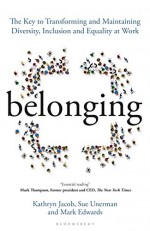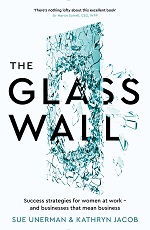In the course of talking about The Glass Wall, success strategies for women at work and businesses that mean business, some people have told me and my co-author Kathryn that there really is no need to be anxious about gender inequality in senior management. They speak comfortably about the rise of Millennials in the workforce solving any gender balance issues.
It seems true that for millennials as a generation that the idea that gender is binary seems out of date. Indeed using male and female as synonyms for men and women is offensive in this respect already as you can self-assign as a man or a woman but this may be different from your biological origins. For older generations this idea may still seem controversial, but for millennials, now a huge part of the workforce, it’s how life now is.
If this is true then surely the boards of companies will sort themselves out I have been told. Gender will become a less relevant matter. One media company ceo has in fact placed a bet with me to that effect.
I’m obviously not convinced about this. For decades women have been told that the matter will resolve itself and with just 9.6% of FTSE 100 boards with executive women directors and more ceos of those companies named Dave than women ceos it certainly has not so far. The reason for this is actually I think that the situation isn’t about the gender you identify with at all it is about power and how you use it.
Our research for the book suggests that boys get more training in fighting and pushing themselves forward and girls get more direction in playing nicely together. Boys in the UK participate in more sports for longer at school than girls. Culture directs women to believe that self-deprecation is necessary for peer acceptance. Men are meant to show off.
Culture takes a huge amount of time to change. Whilst deferential attitudes to politicians and policemen may have shifted (we don’t live in the world of Dixon of Dock Green these days) there is still huge deference in organisations to the boss, to the man who can fire you, and hierarchies are naturally formed in a pyramid structure down from that man (it is still usually a man). Yuval Harari however thinks that there is one thing that that is changing heritage power structures at work. Unfortunately for human kind, it is not a shift towards gender parity or even to a flatter less hierarchical way of working. It is a shift of power out of the hands of humans altogether.
Harari says that the net, artificial intelligence and biotechnology are moving so fast that we just can’t keep up. “You’d be surprised how many seemingly powerful people deny having the power to change things, and don’t even know who has such power… the world is changing so fast due to technology. Yet technology doesn’t obey the tradition power structure, hence presidents, generals and tycoons may genuinely feel that somebody is pulling the rug from under their feet.” His theory is that while people are worrying about last century’s political issues (left versus right, socialism and capitalism, democracy and authoritarianism) we’re worrying about the wrong things. What we should be considering is how on earth we legislate for any control over the coming revolutions in cyber space.
So the one factor that may step change the workplace and society in general is not a release of power by men to women because of a generation shift. It might be that we will shift to a gender neutral meritocracy finally in the face of the cyber revolution.





Fresh blood in the mix
Wednesday, October 26th, 2016This felt a bit strange to me, as a panellist from the media agency sector. We have for a long time now been including branded content as a crucial part of the content and connections mix of a brand’s media plan. Most planners now routinely consider how branded content could play a role in driving client’s objectives and outcomes.
(The answer might sometimes be it can’t, but crucially, the question is usually asked.)
It didn’t feel very much as though this source of “fresh blood” from the media agency sector has had much, if any impact, on the funding mix for TV based on the debates.
The Royal Television Society exists to celebrate and encourage work in TV in all fields. Its CEO Theresa Wise invited me along to participate in a panel entitled: You don’t own a TV? What is all your furniture pointed at?
It is of course a time of great change.
We are on the brink of a coming together of the disrupted (the heritage television channels) and the disruptors (YouTube, Facebook etc) to create a new eco-system in television funding with new rules of thumb.
We’ve created very interesting and effective campaigns using content in this way. Scope’s #EndtheAwkward short form content in partnership with Channel 4 is just one effective campaign that would come into this category of work.
This (and there are many other examples, you will have your favourites) does not compromise the high editorial standards we expect from the channel. This campaign was great for the outcomes for the audience (very funny content), for the channel (advertiser funded short form content) and the advertiser (changed attitudes).
We know that branded content funded by an advertiser can attract additional audience to the channel too. When MediaCom partnered with Channel 4 and Google to bring the live TV performance that launched Universal Music’s Sam Smith in the UK, an additional 100,000 viewers tuned in specifically to watch the ad.
We know too that there are more brands who would spend money in this way if they could.
Why isn’t there more branded content injecting “fresh blood into the funding mix” than we’ve seen so far?
I think there are three reasons for the fresh blood merely being a trickle so far.
Hugh Dennis ended on a cheerful note by asking the panel to predict who was going to go out of business. If we’ve learnt anything in 2016 it is not to make foolish predictions. However anyone who isn’t diversifying revenue streams needs to wake up and smell the coffee.
Posted in MediaComment | No Comments »